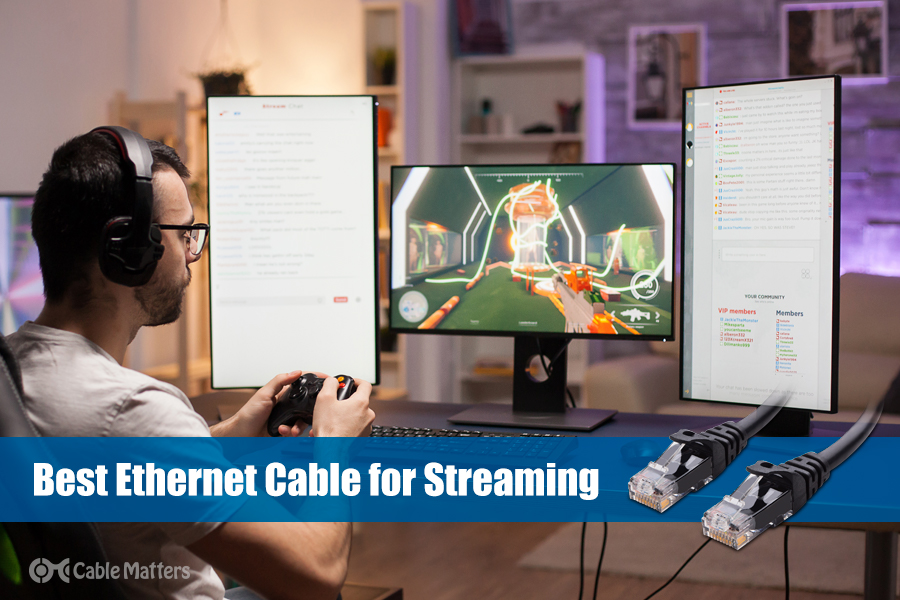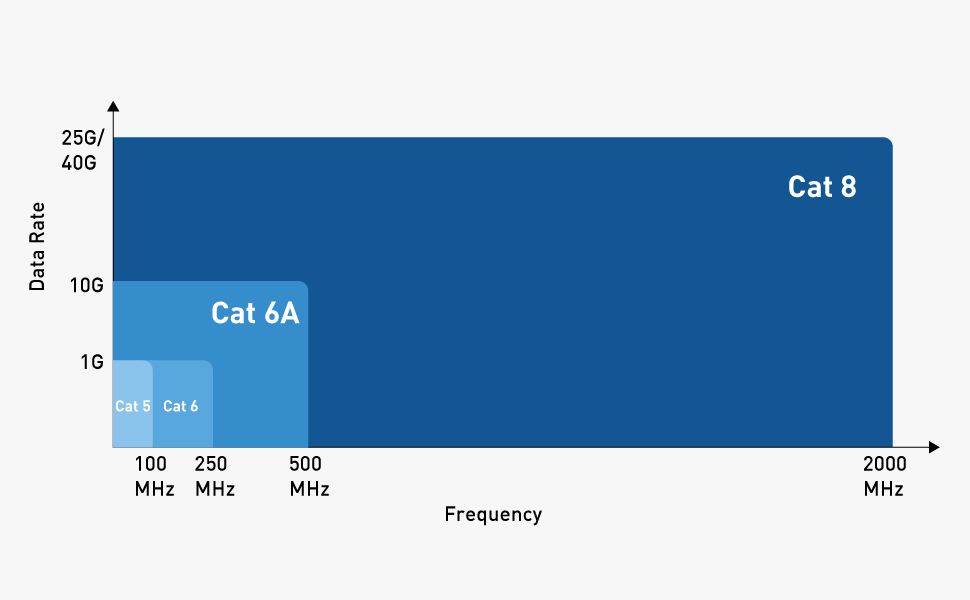
Wi-Fi might be ever faster and more reliable, but it still can’t reach the speeds and reliability of Ethernet. If you’re looking to stream games, or your favorite movies and TV shows and want to make sure that you get the best quality video at the highest possible resolution, then using an Ethernet cable for streaming will typically get you the best results.
But how do you know which are the best Ethernet cables for streaming? It can be a little tricky as there are many different Ethernet cable types, from various generations, and with all sorts of different features. If you just want the easy option, then the best Ethernet Cables for streaming will be the latest-generation, Cat 8 cables, with the best shielding – and often the highest price tag.
But if you’re interested in a little more nuance, seeing what the best Ethernet cable is for you, read on.
Does An Ethernet Cable Improve Streaming Quality?
Improved streaming quality isn’t an inerrant feature of Ethernet cables, but if your Wi-Fi can’t keep up with the quality of video that you’re looking to stream, that can lead to heavier compression and greater video artifacts. Similarly so, if you have a spotty Wi-Fi signal or a crowded Wi-Fi channel on the frequency you’re streaming video on, then using an Ethernet cable instead may help.
Where Wi-Fi needs to have the available channel space and free bandwidth to stream video effectively, especially at higher resolutions, that’s less of a concern with Ethernet. Having a single, dedicated cable for your stream means you aren’t competing with other connections in quite the same way. You’ll still need a router that can handle the video that you’re streaming, as well as any other simultaneous network traffic, but it’s not affected by other wireless connections in the same way.
Speed Requirements For Streaming
The bandwidth you need to have available for streaming depends on the resolution of the video you’re looking to stream, as well as whether it includes additional data like HDR. The requirements can differ depending on the streaming service and streaming device, as each company and entity can use its own compression algorithms.
That said, in general, for a standard 1080p stream, you need at least a five megabits per second (5Mbps) connection. If you’re looking to stream 4K UHD video, however, most services demand at least 20 Mbps, and if you’re streaming 4K UHD HDR, 25 Mbps to be on the safe side.
It’s possible you’ll still be able to stream at those resolutions with less available bandwidth, but you may encounter more buffering, greater screen artifacts, and dynamic resolution adjustment that lowers the overall quality of the stream you’re viewing.
Ethernet vs WiFi for Streaming
You can use both Ethernet and Wi-Fi connections to get your streaming device online and ready to stream, but which should you use? This will largely depend on your personal situation and your own needs and wants, but there are some objective truths about both options which bear considering.
Wi-Fi is undoubtedly the simpler option. All streaming devices have native Wi-Fi support, so you can just plug them in, log in to your local network and get streaming. If you have a recent-generation (read: Wi-Fi 5, 6, or 6E) compatible router and streaming stick, you’ll have no trouble hitting the kind of data rates necessary for UHD streaming – providing your internet service provider has you on a 25Mbps+ package. Wi-Fi is, however, susceptible to being swamped by too many devices on the network, can be affected by obstructions and non-networked devices like microwaves, and arguably isn’t as secure as Ethernet.
Ethernet, on the other hand, can be faster and more stable than Wi-Fi – although it goes toe to toe with the top-spec wireless connections – and it’s not susceptible to interference in the same way. It is, however, harder to set up, with many streaming devices requiring adapters to connect them to an Ethernet cable, if they have the option at all.
What is the Best Ethernet Cable for Streaming?
There is no de facto best Ethernet cable for streaming, but there are ones that will be right for you. If you need the absolute greatest data rate possible, then a high-quality Cat 8 Ethernet cable will see you right. It can support speeds up to 40 Gbps and has some of the best shielding of any Ethernet cable type. It features foil and braided shielding for enhanced protection against electromagnetic interface, and crosstalk.

Alternatively, if you don’t need all that performance and want a more affordable Ethernet solution, then the next step down is the still-excellent Cat 6A shielded Ethernet cable. These offer excellent performance – up to 10 Gbps – as well as robust shielding.
If even that seems like more than you need, then the classic Cat 6 Ethernet cable is just fine for all kinds of streaming jobs. It can still manage up to 10Gbps at shorter lengths, or up to 1Gbps over longer distances, and still comes with effective shielding – in some cases, including a spline for added crosstalk protection.